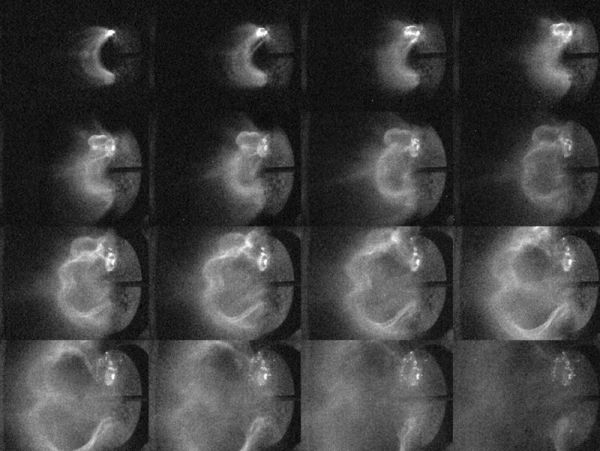Solar coronal loops can unleash flares of charged particles that can pose a genuine threat to communication satellites. Replicating solar corona in a scaled down form in laboratories is helping to develop our understanding of these phenomena so that we can better predict and mitigate the threats they pose. Ultra high speed photography is helping to contribute to this research.
Coronal loops, arcs of glowing hot plasma that appear above the Sun's surface, are formed where the plasma flows along the curving lines of powerful magnetic fields. Although the Earth’s magnetic field provides a shield to the X-rays and energised particles emitted by the coronal loops, anything outside this is vulnerable to damage, including satellites.
"This potential for causing havoc—which only increases the more humanity relies on satellites for communications, weather forecasting, and keeping track of resources—makes understanding how these solar events work critically important,"
Paul Bellan, professor of applied physics in the Division of Engineering and Applied Science.
Source: Caltech website
Our understanding of solar corona has traditionally been based on observation and analysis of distant, unrepeatable solar events and numerical modelling. To better understand the behaviour and complex mechanisms creating solar corona they can be replicated in a laboratory and scaled up for real world estimates. Experimental arrangements where numerous types of instrumentation can be used to capture data from repeatable tests under controlled conditions provide another way to develop our understanding of this phenomena by changing a single dimension at a time and then observing and measuring the outcome.
Being able to capture images of simulated solar coronal loops forms a critical element of the laboratory experiments. These images, captured with a Specialised Images SIM camera at 3.3Million pictures/second at Caltech for Prof. Bellam, are of a plasma emitting from an electrode and forming an expanding circular shape which replicates a solar coronal loop.
Download Caltech Lab Experiments and the Insights They Provide Into Solar Corona Phenomena




























